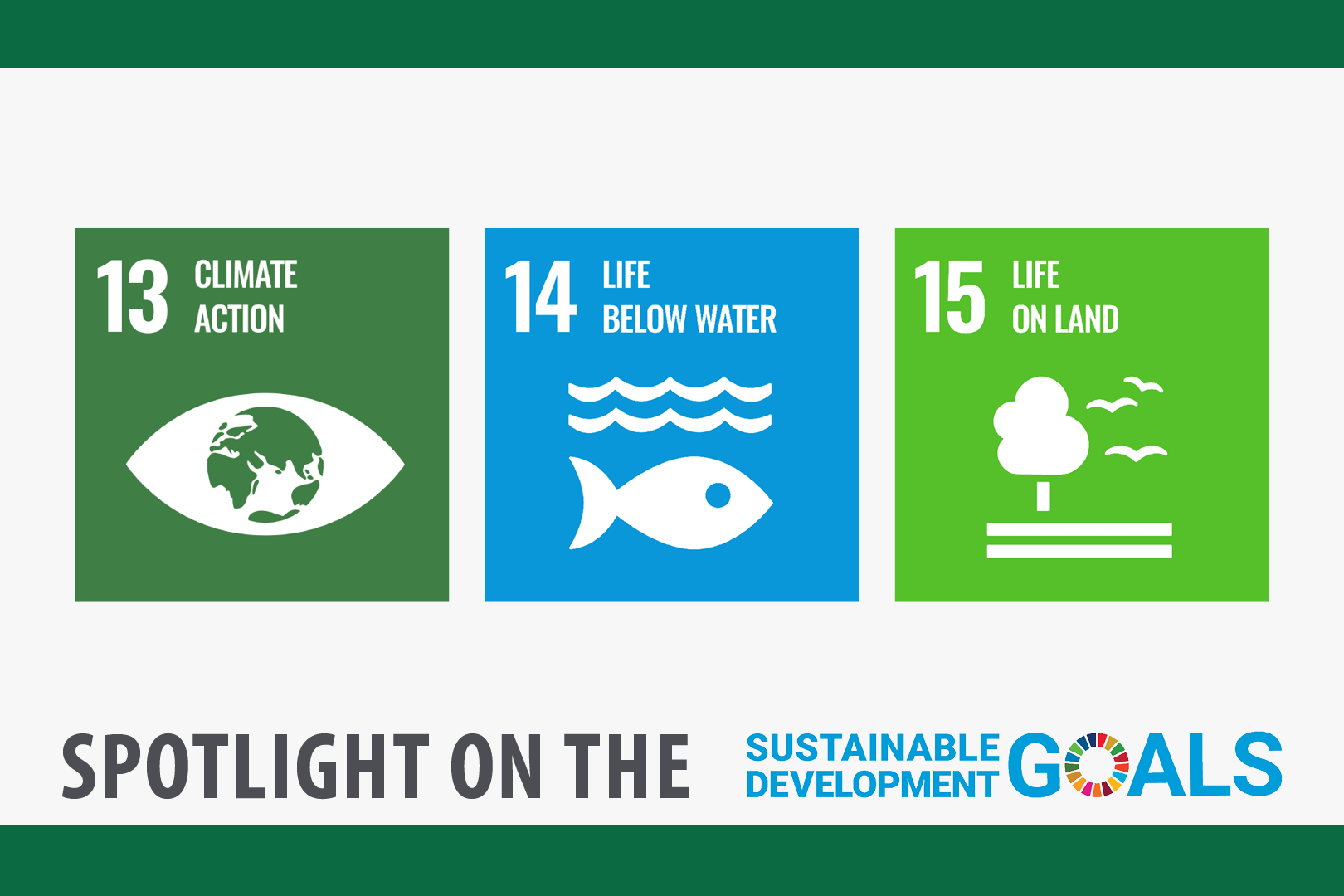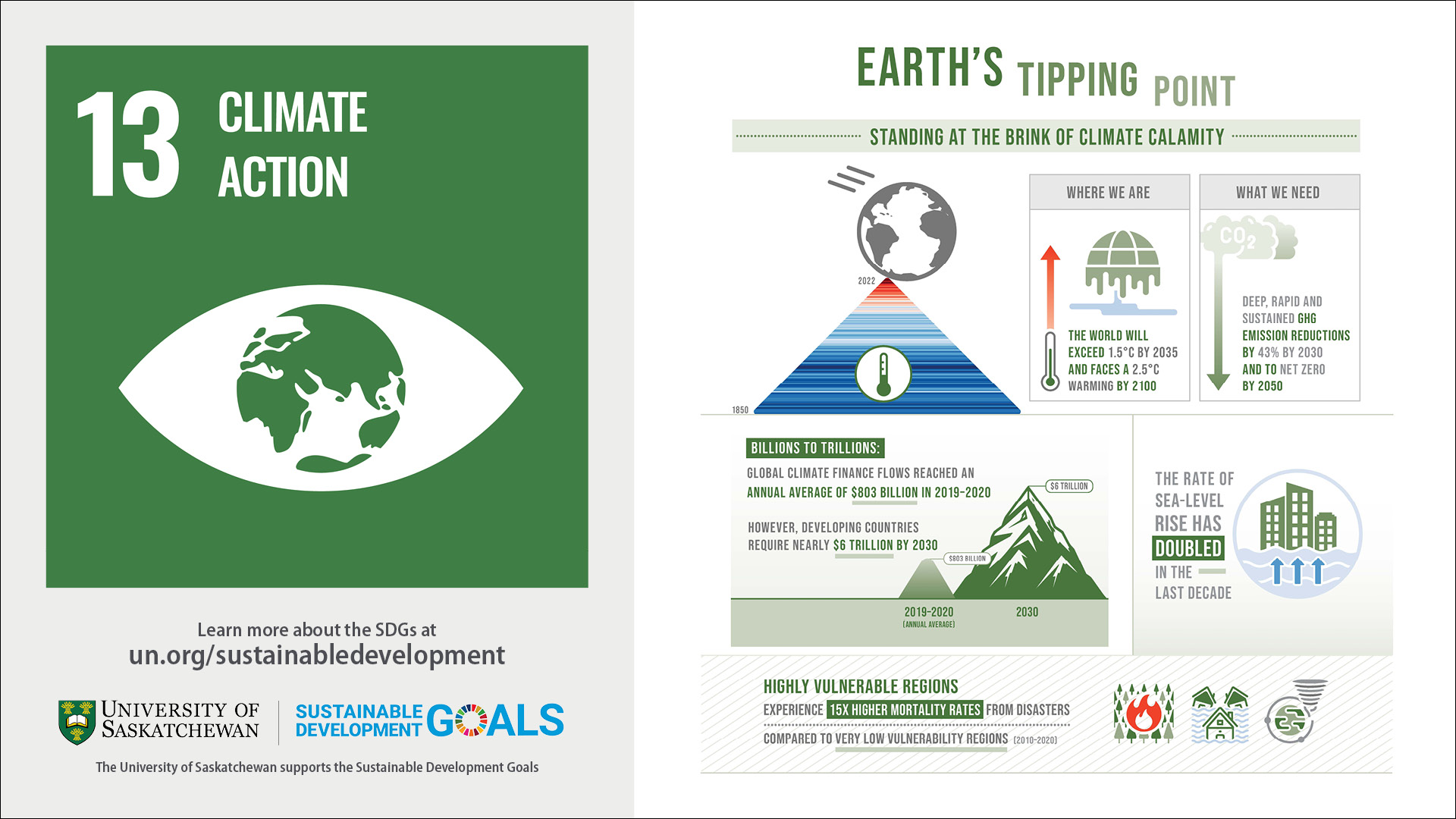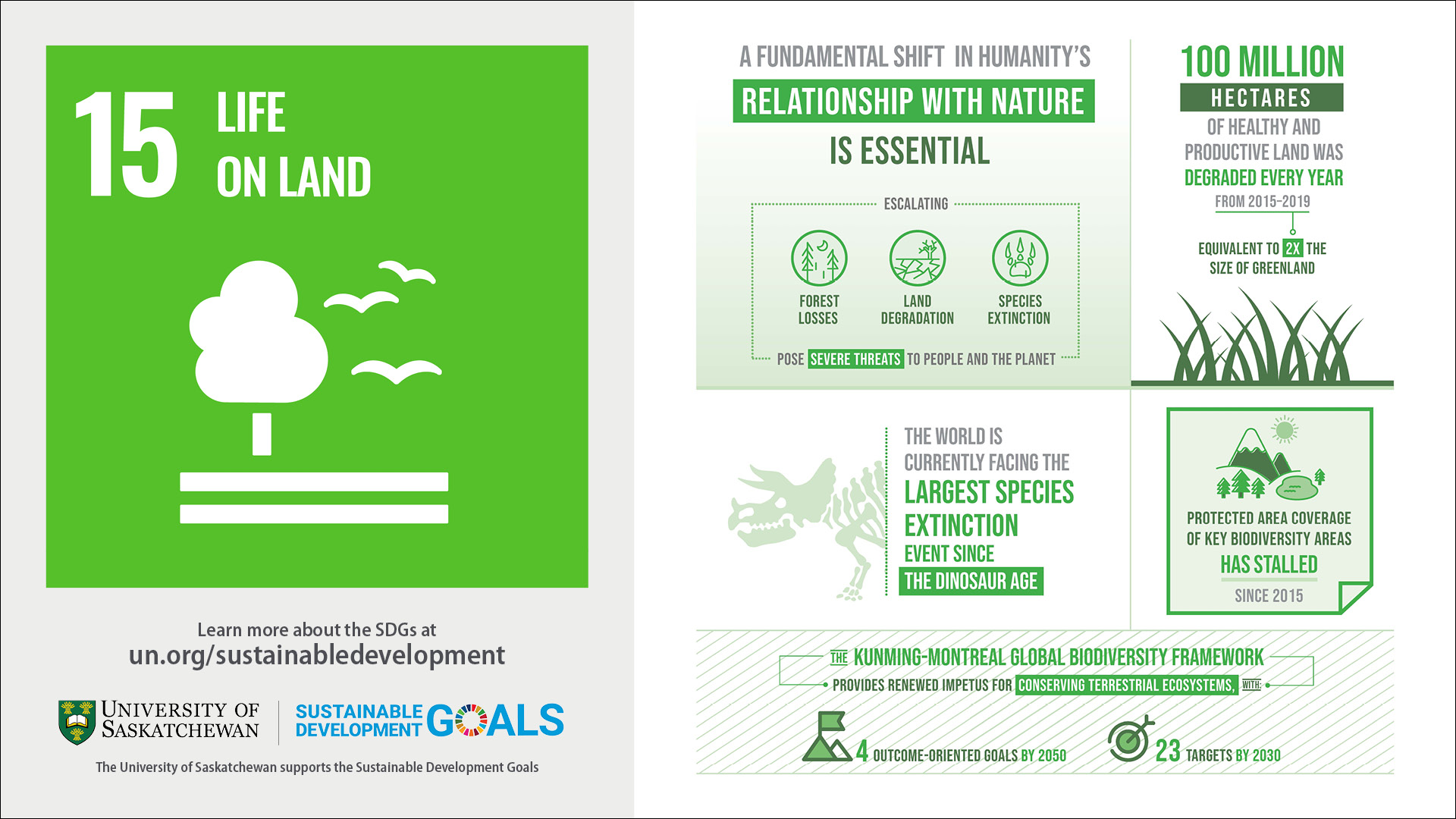
SDG Spotlight: Goals 13, 14, and 15
Take urgent action to combat climate change and its impacts. Conserve and sustainably use the oceans, seas and marine resources. Sustainably manage forests, combat desertification, halt and reverse land degradation, halt biodiversity loss.
Every person, in every country in every continent will be impacted in some shape or form by climate change. There is a climate cataclysm looming, and we are underprepared for what this could mean.
Climate change is caused by human activities and threatens life on earth as we know it. With rising greenhouse gas emissions, climate change is occurring at rates much faster than anticipated. Its impacts can be devastating and include extreme and changing weather patterns and rising sea levels.
If left unchecked, climate change will undo a lot of the development progress made over the past years. It will also provoke mass migrations that will lead to instability and wars.
To limit global warming to 1.5°C above pre- industrial levels, emissions must already be decreasing and need to be cut by almost half by 2030, just seven years away. But, we are drastically off track from this target.
Urgent and transformative going beyond mere plans and promises are crucial. It requires raising ambition, covering entire economies and moving towards climate-resilient development, while outlining a clear path to achieve net-zero emissions. Immediate measures are necessary to avoid catastrophic consequences and secure a sustainable future for generations to come.
SOURCE
- With a climate cataclysm looming, the pace and scale of current climate action plans are wholly insufficient to effectively tackle climate change. Increasingly frequent and intense extreme weather events are already impacting every region on Earth. Rising temperatures will escalate these hazards further, posing grave risks.
- The Intergovernmental Panel on Climate Change (IPCC) emphasizes that deep, rapid and sustained reductions in greenhouse gas (GHG) emissions are essential in all sectors, beginning now and continuing throughout this decade. To limit global warming to 1.5°C above pre- industrial levels, emissions must already be decreasing and need to be cut by almost half by 2030, just seven years away.
- Urgent and transformative action is crucial, going beyond mere plans and promises. It requires raising ambition, covering entire economies and moving towards climate-resilient development, while outlining a clear path to achieve net-zero emissions. Time is running out, and immediate measures are necessary to avoid catastrophic consequences and secure a sustainable future for generations to come.
SOURCE

Goal 14 is about conserving and sustainably using the oceans, seas and marine resources. Healthy oceans and seas are essential to human existence and life on Earth.
The Ocean is intrinsic to our life on earth. Covering three-quarters of the Earth’s surface, contain 97 percent of the Earth’s water, and represent 99 percent of the living space on the planet by volume.
They provide key natural resources including food, medicines, biofuels and other products; help with the breakdown and removal of waste and pollution; and their coastal ecosystems act as buffers to reduce damage from storms. They also act as the planet’s greatest carbon sink.
Worryingly, marine pollution is reaching extreme levels, with over 17 million metric tons clogging the ocean in 2021, a figure set to double or triple by 2040. Plastic is the most harmful type of ocean pollution.
Currently, the ocean’s average pH is 8.1 which is about 30 per cent more acidic than in pre- industrial times. Ocean acidification threatens the survival of marine life, disrupts the food web, and undermines vital services provided by the ocean and our own food security.
Careful management of this essential global resource is a key feature of a sustainable future. This includes increasing funding for ocean science, intensifying conservation efforts, and urgently turning the tide on climate change to safeguard the planet’s largest ecosystem. Current efforts to protect are not yet meeting the urgent need to safeguard this vast, yet fragile, resource.
SOURCE
- The ocean is in a state of emergency as increasing eutrophication, acidification, ocean warming and plastic pollution worsen its health. Additionally, the alarming trend of overfishing persists, leading to the depletion of over one third of global fish stocks.
- While there has been some progress in expanding marine protected areas, combating illegal, unreported and unregulated fishing, banning fishing subsidies and supporting small-scale fishers, action is not advancing at the speed or scale required to meet Goal 14.
- To counter these trends, swift and coordinated global action is imperative. This entails increasing funding for ocean science, intensifying conservation efforts, advancing nature- and ecosystem-based solutions, addressing the interconnections and impacts of human-induced pressures, and urgently turning the tide on climate change to safeguard the planet’s largest ecosystem.
SOURCE

Goal 15 is about conserving life on land. It is to protect and restore terrestrial ecosystems, sustainably manage forests, combat desertification, and halt and reverse land degradation and stop biodiversity loss.
Earth’s ecosystems are vital for sustaining human life, they contribute to over half of global GDP and encompass diverse cultural, spiritual, and economic values.
However, the world is facing a triple crisis of climate change, pollution and biodiversity loss.
Between 2015 and 2019, at least 100 million hectares of healthy and productive land were degraded every year, impacting the lives of 1.3 billion people.
Agricultural expansion is the direct driver of almost 90 per cent of deforestation. This is in direct relation to our food systems, and oil palm harvesting accounted for 7 per cent of global deforestation from 2000 to 2018.
Global and regional efforts to sustain forest ecosystems as well as their social, economic and environmental functions are essential, in particular for developing countries and the tropics.
We need to shift humanity’s relationship with nature to achieve Goal 15, and realise that nature is the root of our life of earth. The recently adopted Kunming-Montreal Global Biodiversity Framework provides renewed impetus for Goal 15, outlining four outcome- oriented goals to be achieved by 2050 and 23 targets to be achieved by 2030.
SOURCE
- Terrestrial ecosystems are vital for sustaining human life, contributing to over half of global GDP and encompassing diverse cultural, spiritual, and economic values.
- However, the world faces a triple crisis of climate change, pollution and biodiversity loss. Escalating trends of forest loss, land degradation and the extinction of species pose a severe threat to both the planet and people.
- Despite some progress in sustainable forest management, protected areas, and the uptake of national biodiversity values and natural capital accounting, most improvements have been modest. The recently adopted Kunming-Montreal Global Biodiversity Framework provides renewed impetus for Goal 15, outlining four outcome-oriented goals to be achieved by 2050 and 23 targets to be achieved by 2030.
SOURCE


